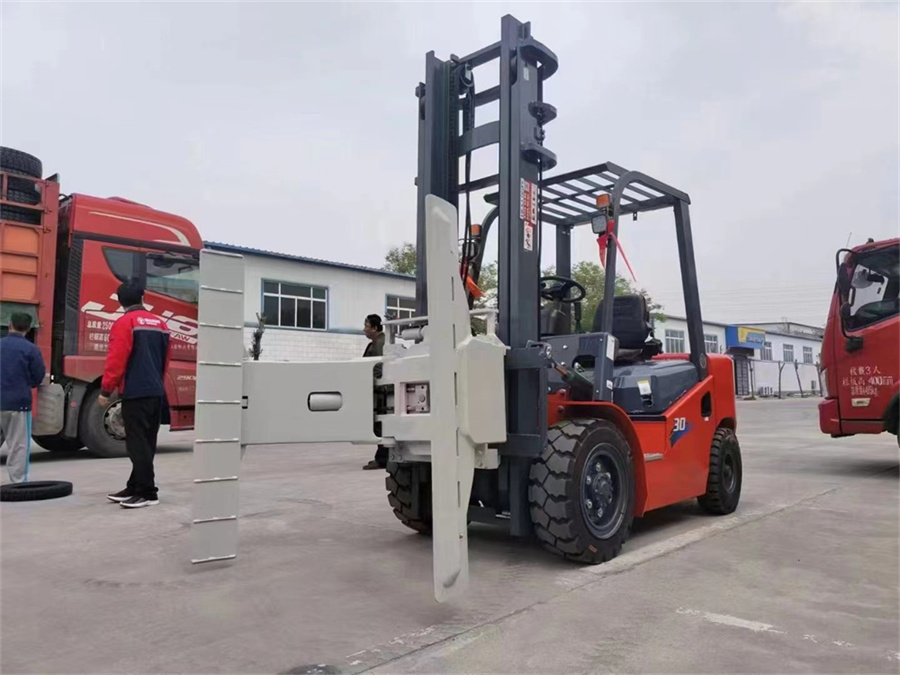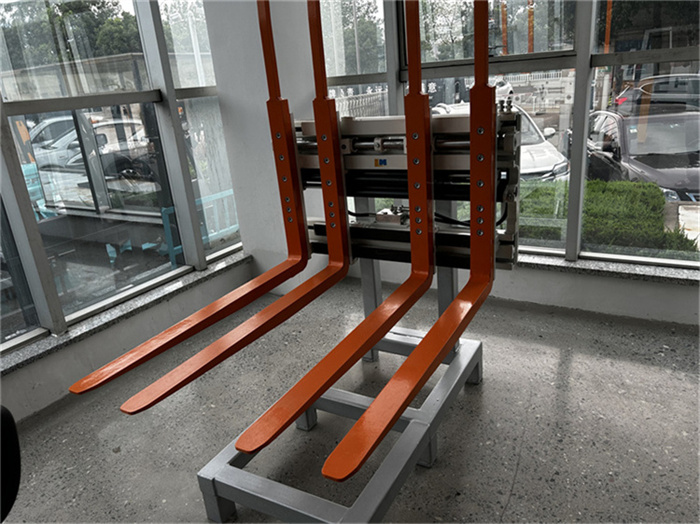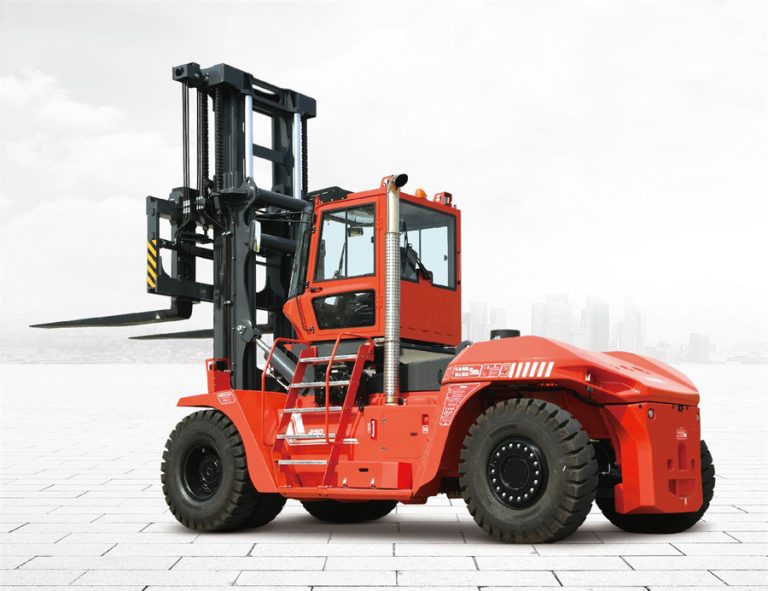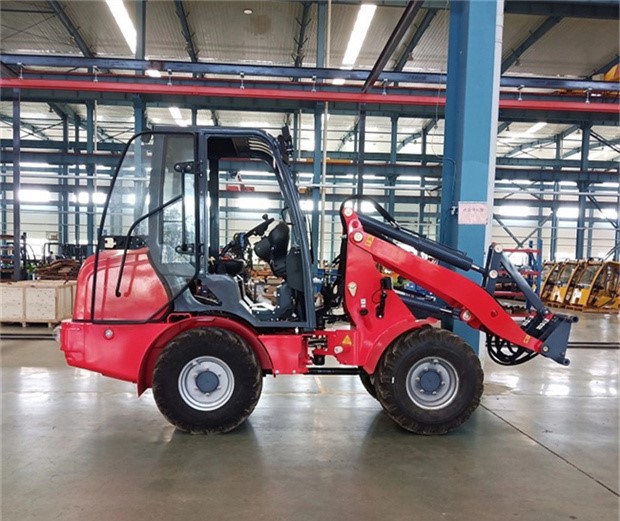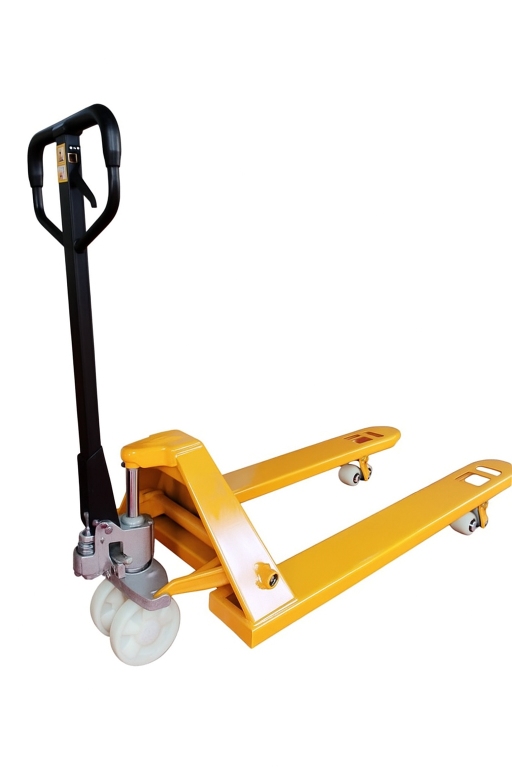Hey folks, warehouse bosses and forklift drivers – have you ever tried fitting an attachment that looked right, but then it shook loose while you were lifting something? Man, I’ve been in that spot, and let me tell you, those slip-ups can pile up expenses quicker than a thirsty forklift burns through fuel. In this piece, we’re gonna break down how to handle forklift attachment compatibility. We’ll go through it one bit at a time so you can skip those expensive slip-ups. No matter if you’re piling up boxes in a busy shipping hub or moving stuff around in a cramped storage area, nailing this means things run smoother, with less hassle and a touch more calm when the day wraps up.
We’ll hit the fundamentals, walk you through a straightforward process, throw in some stories from actual jobsites, and talk about why cutting corners on checks just isn’t smart. When we’re done, you’ll know how to pair attachments like you’ve been doing it forever. Alright, let’s get moving.
Understanding Forklift Attachment Compatibility
To start, what do we mean by “forklift attachment compatibility”? It’s more than just sticking on a fresh clamp or spinner and thinking it’s set. Compatibility is all about how an attachment lines up with your forklift’s build, strength, and daily tasks. It’s kinda like matching up shoes – they might both be dark, but if one’s thick and the other’s thin, you’re headed for trouble.
Why Compatibility Matters in the Long Run
Imagine you’re out in a wood lot, and your 3-ton diesel forklift is meant to pick up stacks with a new side-mover. But uh-oh, the hook-up class doesn’t fit, and partway through your shift, it gives way. That drops a bunch that messes up your stock and stops work for a while. Numbers from the material moving field show this – reports on safety say wrong attachments lead to roughly 15-20% of forklift troubles yearly. That’s not only lost time; it’s fix-up costs that hit around $5,000 each time, and maybe even claims for hurt workers. Plus, the rules folks like OSHA take this stuff seriously when gear isn’t proper.
On top of safety, there’s the speed side. A good match can bump up your output by 10-15%, based on some storage studies I’ve read. It lets you deal with different stuff without changing machines, which saves minutes and gas. But if you overlook it, you end up with early wear on pumps or even motor stress. I’ve talked to drivers who’ve gone through rubber twice as quick because a bad spinner threw off the steadiness. That’s no joke.
And hey, while we’re on this, think about the bigger picture. In a fast-moving spot like a delivery center, where every second counts, having attachments that click right means fewer stops. You keep the flow going, and that adds up to happier teams and better bottom lines. But mess it up, and you’re dealing with frustrations that ripple out – like delayed shipments or grumpy clients. I’ve seen small outfits turn things around just by paying attention here, turning chaotic days into steady ones.
Common Types of Attachments and Their Quirks
Before we move to the how-to, let’s touch on some attachment kinds you might run into. Things like grippers for paper bundles, spinners for boxes, movers for exact spots – each has its own needs for fitting. For example, a bundle gripper on a 2.5-ton electric works fine inside, but if you put it on a bumpy-ground diesel without looking at the pumps, you’re in for issues. Remember, attachments aren’t all the same; they come in groups, like ITA Group II or III, depending on the holder width and height.
Take clamps – they’re great for holding odd shapes, but they need strong pumps to squeeze right. Rotators help flip loads easy, yet they can mess with balance if the forklift isn’t beefy enough. Side-shifters let you nudge stuff without moving the whole machine, which is handy in narrow paths, but check the hook-up or they’ll wobble. And for bigger jobs, like multi-box handlers, they shine in high-volume spots, though they demand a solid frame to avoid tips. Each one brings its own twist, so knowing these helps you pick smart.
I’ve worked with teams where they tried a rotator on a light electric model, thinking it was no big deal. But the extra pull drained the battery fast, and they ended up swapping it out after just a week. Stuff like that shows why understanding the quirks pays off – it keeps you from chasing fixes later.
Step-by-Step Guide to Ensuring Compatibility
Okay, time to get hands-on. This isn’t tough stuff, but missing a part is like skipping the fuel check before a long run. Stick to these, and you’ll dodge those wallet-hitting errors that bug storage leaders at night.
Step 1: Assess Your Forklift’s Specifications
Kick off with this every time. Pull out your forklift’s guide or details page – what’s the type, weight limit, and pump flow? Say you’ve got a 3.5-ton diesel that lifts up to 4 meters. Note the holder kind, often Group II for smaller ones. Measure the arm spread and hook spots too.
Think about the weight limit – does the add-on push you past what the forklift can take? A 500-pound gripper on a 3-ton might look okay, but add in how the center moves. Then the pumps – look at pressure and flow in gallons per minute. Weak flow? Your spinner might drag slow. And don’t forget the upright and slant – make sure the add-on doesn’t block your view or mess with angles.
A pal of mine in a food shipping place forgot the pump pressure on his 2-ton electric. He wound up with a slow push-pull that cut picking speed in half. The takeaway: check twice, hook up once. It sounds basic, but it saves headaches.
Expanding on that, when you’re assessing, jot down everything. Make a quick note on paper or your phone. Include things like tire type too, because if you’re on rough ground, that affects how stable the whole setup is. I’ve found that in wet conditions, like after a rain in an outdoor yard, slippery surfaces make compatibility even more crucial. You don’t want an attachment that’s a bit off causing a slide.
Step 2: Identify the Right Attachment Type
Next, link the task to the tool. For drums, pick a drum spinner. But go further – is it for inside electric work or outside diesel rough work? Check fit charts from sellers; they list types by weight often.
For instance, on a 1.5-3 ton electric, side-movers and grippers work well, especially with battery power and small holders. For 4-5 ton diesel, spinners and bundle grippers fit, thanks to strong pumps and tough builds. And for 5-10 ton heavy ones, push-pulls and multi-box handlers shine, with beefed-up uprights and longer centers.
A handy tip: If you’re working with special stuff like rolls, look at the gripper’s hold range. Get that wrong, and you could mark up goods or drop them. It’s all about matching the daily grind to the gear.
In my experience, chatting with suppliers early helps here. They know the ins and outs, and sometimes they’ll point out a type you hadn’t thought of. Like once, for a tight warehouse, a compact shifter made all the difference over a bulkier one.
Step 3: Verify Mounting and Installation Requirements
Here’s where it gets real – the hook meets the holder. Most add-ons use fast-hook systems, but confirm the group. Group III for mid-size forklifts, for example.
Look over the holder for damage – twisted hooks mean bad fit. Try the pump links; drips there can run you $1,000 in fixes. Line up the add-on straight; grab a level if you have to.
And just saying, I’ve watched people hurry this in bad weather, like pouring rain, and then rust creeps in down the line. Slow down, even if the higher-ups are pushing.
To add to that, during install, have a second pair of eyes. A coworker spotting something off can prevent big issues. Plus, after hooking up, give it a gentle shake by hand to feel for play. Little things like that build confidence.
Step 4: Factor in Load Capacity and Safety Standards
Fitting isn’t only about parts; it’s about safe weights. Add-ons change the balance point – a side-mover might cut real weight by 10%. Figure new limits: Fresh Weight = Old – (Add-on Weight times Distance from Arm Face) over Center.
For safety, stick to rules like ANSI/ITSDF B56.1. Toss in lights or buzzers if the add-on hides sights. Straight up: At a port I stopped by, a bad spreader almost caused a close call with a 20-ton box. Frightening.
Safety checks should include training too. Make sure drivers know the new feel – how it tilts different or turns slower. That extra step keeps everyone sharp.
Step 5: Test, Validate, and Maintain
Never guess – try it out. Run a practice: pick up, slant, move. Watch for shakes or weird sounds. Then plan regular looks – every 200 hours maybe.
If problems show, adjust or change. Keep records of care; note wear to guess breaks ahead. One storage place I know dropped lost time by 25% by noting add-on trials each month.
Maintenance isn’t glamorous, but it’s key. Clean connections after shifts, especially in dusty spots. And rotate checks among the team to keep it fresh.
Common Pitfalls and How to Sidestep Them
Even experts stumble. Big errors? Overlooking weight spread – that causes flips. Or wrong pumps, leading to draggy work. And grabbing cheap copies without details – save a buck now, lose more later.
To skip them: Always match back to your forklift’s maker tips. Ask pros if stuck. And sometimes, shelling out extra for tested stuff that holds up is worth it.
Other traps include not considering the environment. Indoor electric? Fine for light attachments. But outdoors in mud? You need rugged fits. I’ve heard stories of attachments failing in cold snaps because materials contract. So factor weather in. Another one: Forgetting about operator height or reach. If the controls feel awkward with the new add-on, fatigue sets in quick, leading to mistakes. Train on that. And don’t overload – even if it lifts once, repeated stress breaks things down. Sidestep by sticking to limits and watching wear signs early.
Why Choose JinChengYu FORKLIFT as Your Attachments Supplier
When it comes to solid forklift attachments, JinChengYu FORKLIFT shines as a reliable pick. Located in Qingdao, China, with quick links to worldwide transport, they manage clamps, spinners, and custom handlers for all sorts of fields. Their range covers fits for diesel and electric up to 48 tons, built tough for hard areas like build sites or storage halls. What makes them stand out? A strong setup for selling, parts, and help, along with a focus on good work that keeps operations steady. If you need gear for a 2-ton electric or a big diesel, they offer choices with real build smarts behind them.
Conclusion
To sum it up, getting forklift attachment compatibility spot-on isn’t only about dodging pains – it’s about making your work flow easy, secure, and cheap to run. Stick to these bits, keep an eye on trials, and you’ll stay away from those money-sucking goofs. Keep in mind, a bit of work upfront brings big wins over time.
FAQs
What is forklift attachment compatibility, and why should I care?
Forklift attachment compatibility is about how add-ons like grippers or movers match and run with your machine. You ought to care since bad fits can spark crashes, failures, or slow work – picture stopping a $10,000 fix from a quick miss.
How do I start a step-by-step guide for checking forklift attachment compatibility?
Kick off by grabbing your forklift’s details: weight, pumps, and holder kind. Then line it up with the add-on’s needs. It’s simple, but overlooking it might mean expensive goofs like pump breaks during a task.
Can incompatible attachments really cause costly mistakes, and how to avoid them?
Sure thing – they can shift stuff risky or wear parts out early. To skip expensive goofs, test in a safe spot and look at fit charts. I’ve watched storage places save loads by checking twice before going full tilt.
Is there a quick way to ensure attachment compatibility without a full overhaul?
Yeah, grab a basic list for hook group, weight, and pumps. For extra sure, do a test pick. This bit-by-bit way helps dodge those hidden, pricey slip-ups that hit later.
What if my forklift is older – does compatibility get trickier?
It can, older ones might want special links. Follow the bit-by-bit guide: check details first, then find matching add-ons. It skips expensive goofs like pushing a fit that strains the build.

